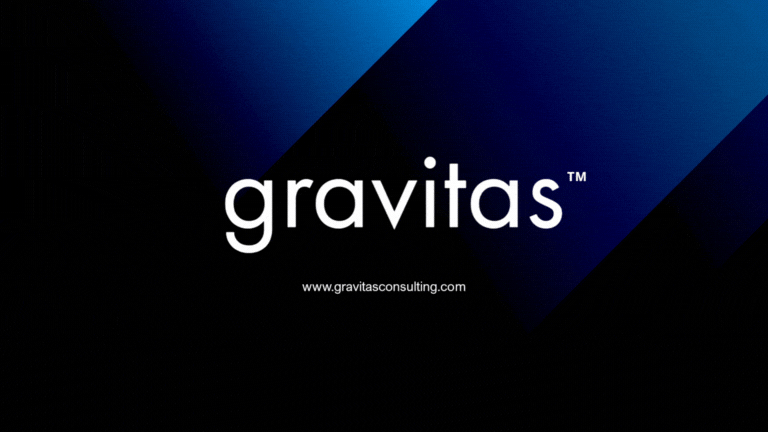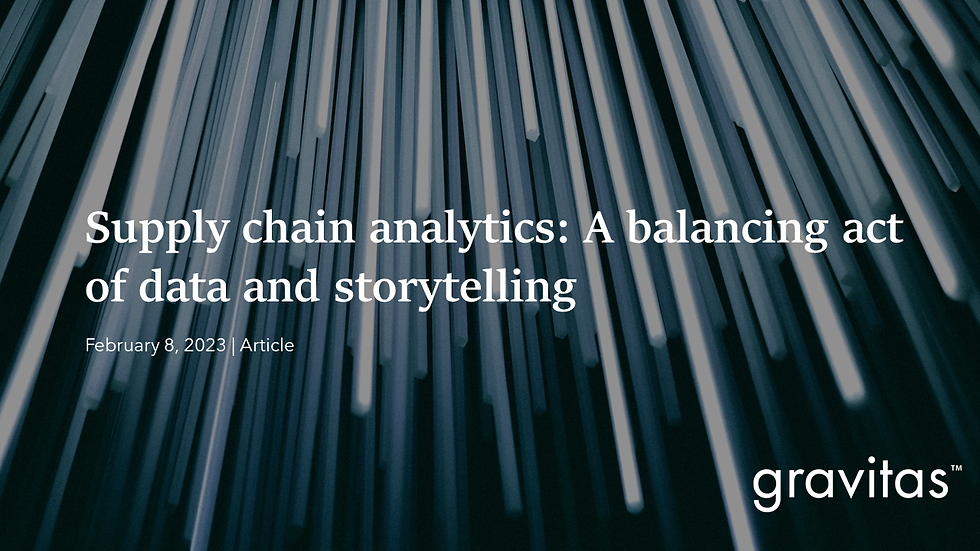Left brain vs. right brain: The art of storytelling in data analytics
- Kapil Nagpal

- Feb 9, 2023
- 3 min read
Updated: Mar 8, 2024
By: Kapil Nagpal | February 09, 2023 | Data Visualization | User-Experience (UX)

Reports and dashboards often bombard managers with verbose data and offer few actionable insights, resulting in information overload. Many organizations encounter this challenge. A significant effort is required to define the correct performance indicators, and data cleansing before managers can start to track and report the health of the business. Over a period of time, the reports and KPIs grow from a few to hundreds. The generally held notion is that managers would know what to do with volumes of data. That, unfortunately, is not true. These analytics reports and dashboards then become unmanageable over time and their adoption starts to dip.
Anecdotally, we encountered a CIO organization that used 30+ KPIs. Upon consultation with Gravitas the client was able to bring those down to five key metrics.
To help clients tell compelling stories about their businesses and start getting things done, we are sharing seven data visualization tips below.

Building storytelling into analytics reports and dashboards can help communicate complex information in a way that is easy to understand and engages the audience.
1. Start with a clear message:
Determine the key message that you want to convey through your analytics report or dashboard. This will help you focus your efforts on presenting the most relevant data and insights.
2. Make the data visual:
Use charts, graphs, and other visual aids to help your audience understand the data more easily. Make sure the visuals are simple, clear, and easy to understand.
3. Use narrative to explain the data:
Use a narrative to explain the data and the insights you have derived from it. This can include a brief overview of the key findings, the context in which the data was collected, and any other relevant information that helps to provide context to the data.
4. Highlight key insights:
Identify the key insights from your analysis and make sure they are highlighted in the report or dashboard. Use visual aids, such as bold text or callouts, to make these insights stand out.
5. Make the report or dashboard interactive:
Interactive dashboards allow your audience to explore the data and insights in more detail. This can help to increase engagement and make the information more accessible.
6. Use storytelling techniques:
Utilize storytelling techniques, such as using a story structure or incorporating a character, to make the data more relatable and memorable to your audience.
7. Make it visually appealing:
Make sure the report or dashboard is visually appealing and easy on the eyes. Use a clean, professional design and color scheme that is consistent throughout the report or dashboard.
By incorporating these principles, we help clients leverage the left brain and the right brain in their analytics reports and dashboards, making the information more accessible, engaging, and memorable to their audience.
How we help our clients using Laminar for Business
Learn how you can transform your analytics with Laminar for Business to tell meaningful stories about your business and get actionable insights. We build business dashboards that bring Fortune 500 best practices to our clients. Our dashboards offer compelling stories and measurable results, disciplined decision-making, and automated reports that help you focus on growing the business.
About Us

Our story began with the deep desire to drive tangible, visible, and measurable outcomes for clients. With that as our guiding beacon, we launched Gravitas Consulting – a boutique consulting firm specializing in bringing Insight to Oversight.
We help our clients scale and improve their businesses by the thoughtful application of Intelligent Information to guide decisions and actions. We leverage our data analytics and visualization, enterprise program and change management, and customer experience design expertise to provide leaders with the intelligence they need to do what they do best, even better.
At Gravitas, we measure success by only one metric: each client’s satisfaction with our ability to drive Outcomes that matter. We stand behind this belief by putting a portion of our fees at risk if we do not meet the commitments we promise.
Our promise to clients is simple: we drive outcomes that matter.
























